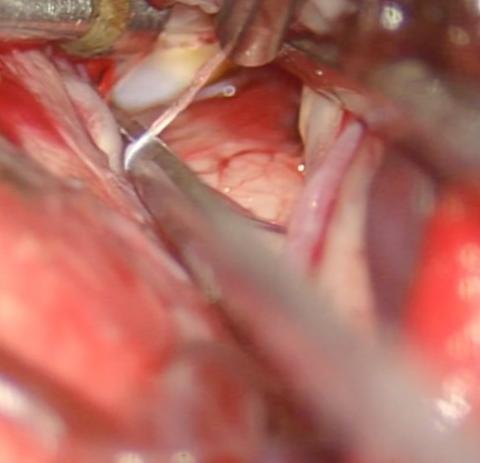Usted está aquí
Peruvian Journal of Neurosurgery
Intracerebral hemorrhage of basal ganglia, surgical management through transinsular transylvian approach. case report
GIUSEPPE ROJAS P.1a, JESÚS FLORES Q.2b
Abstract (Spanish) ||
Full Text ||
PDF (Spanish)
ABSTRACT
Introduction: Acute spontaneous intracerebral hemorrhage is a life-threatening disease of global importance, with a poor prognosis and few effective treatments. For supratentorial intracerebral hemorrhage, early evacuation (<24 hours after hemorrhage onset) with standard craniotomy is considered lifesaving in deteriorating patients. In cases where the hemorrhage is less than 1 cm from the cortical surface, the clinical benefit is even greater.
Clinical case: We present the case of a 56-year-old obese male patient with a history of high blood pressure who was admitted with an extensive intracerebral hematoma in the basal ganglia of the right hemisphere. A right frontoparietotemporal craniotomy was performed, with the opening of the Sylvian fissure and approach through the insula, managing to evacuate the hematoma. The initial evolution was stationary, so it was necessary to remove the bone platelet, thereby achieving a favorable evolution, then performing the cranioplasty.
Conclusion: Surgical treatment of intracerebral hemorrhage of the basal ganglia through the transylvian transinsular approach has shown good results in several case series in terms of evacuation degree and functional outcome. In addition, this approach spares the frontal and temporal cortex, sometimes avoiding a decompressive craniectomy and its complications
Keywords: Cerebral Hemorrhage, Hematoma, Decompressive Craniectomy, Basal Ganglia (source: MeSH NLM)



